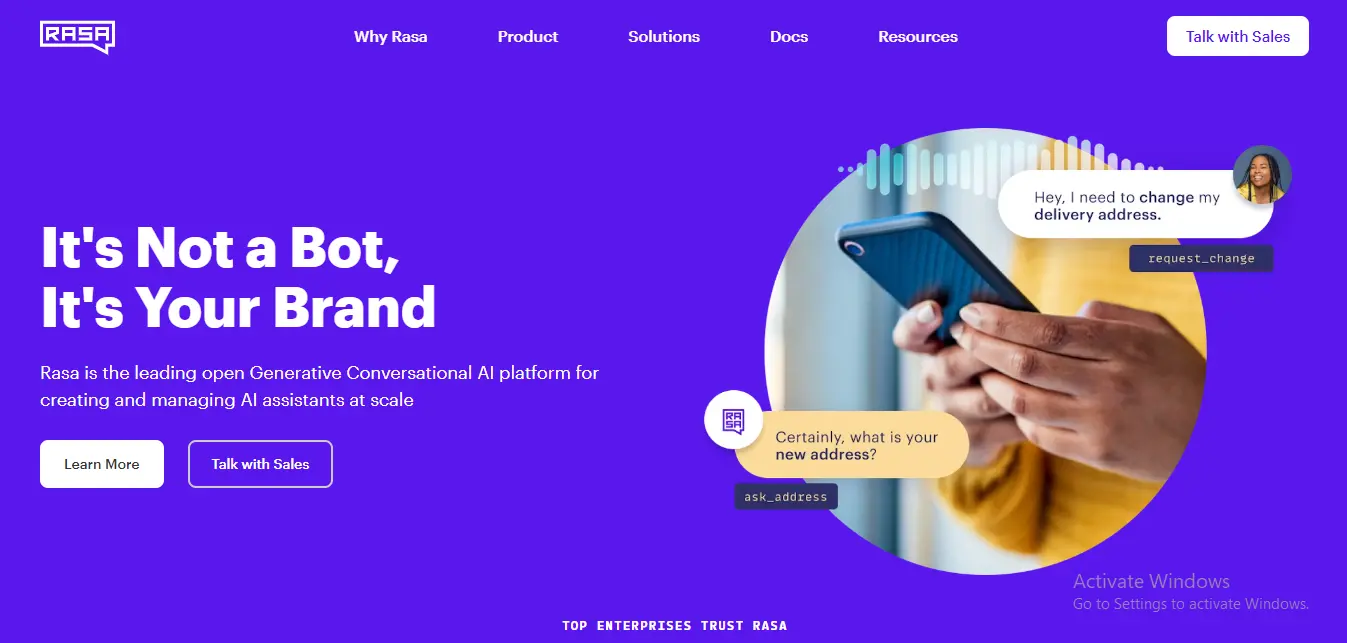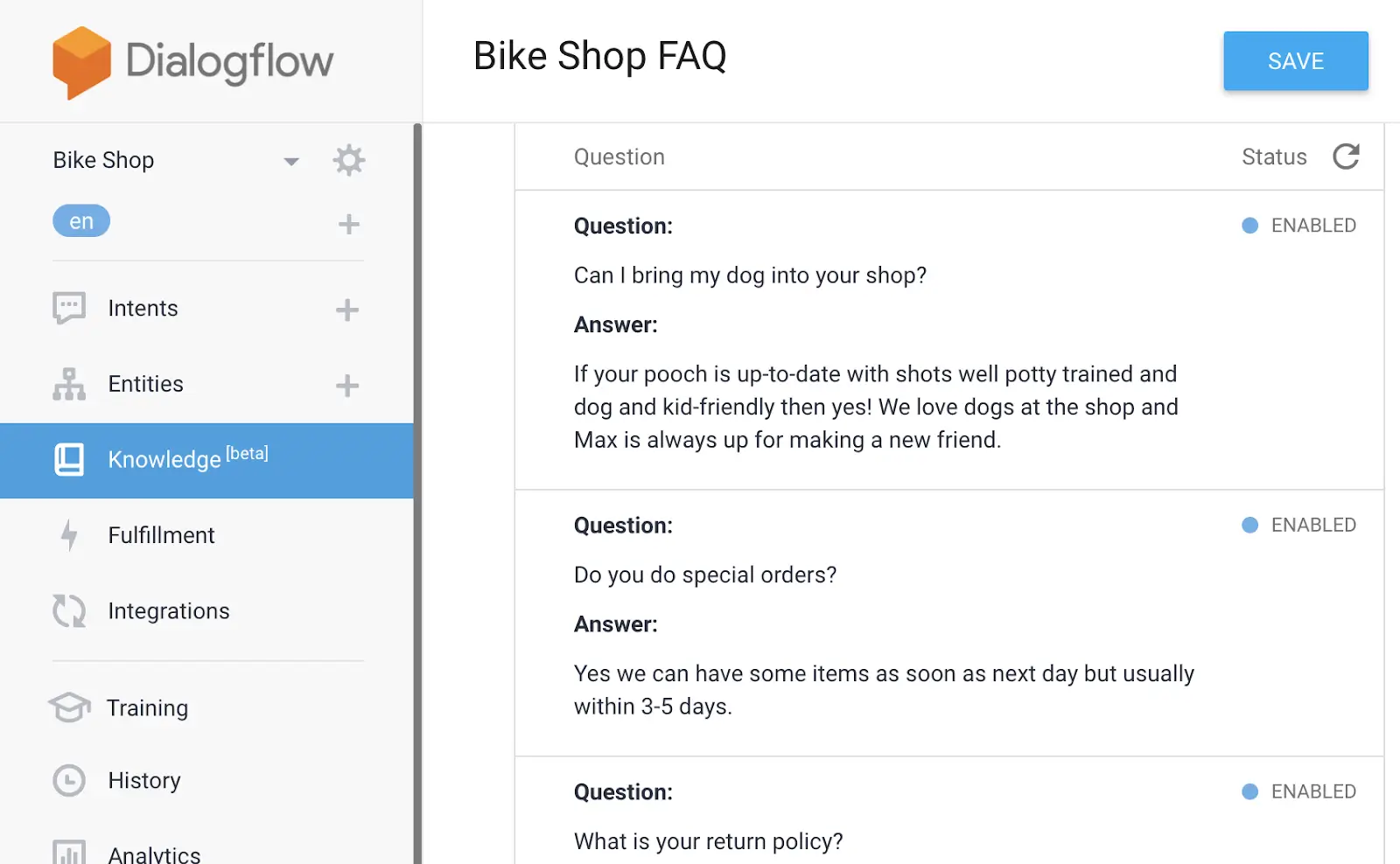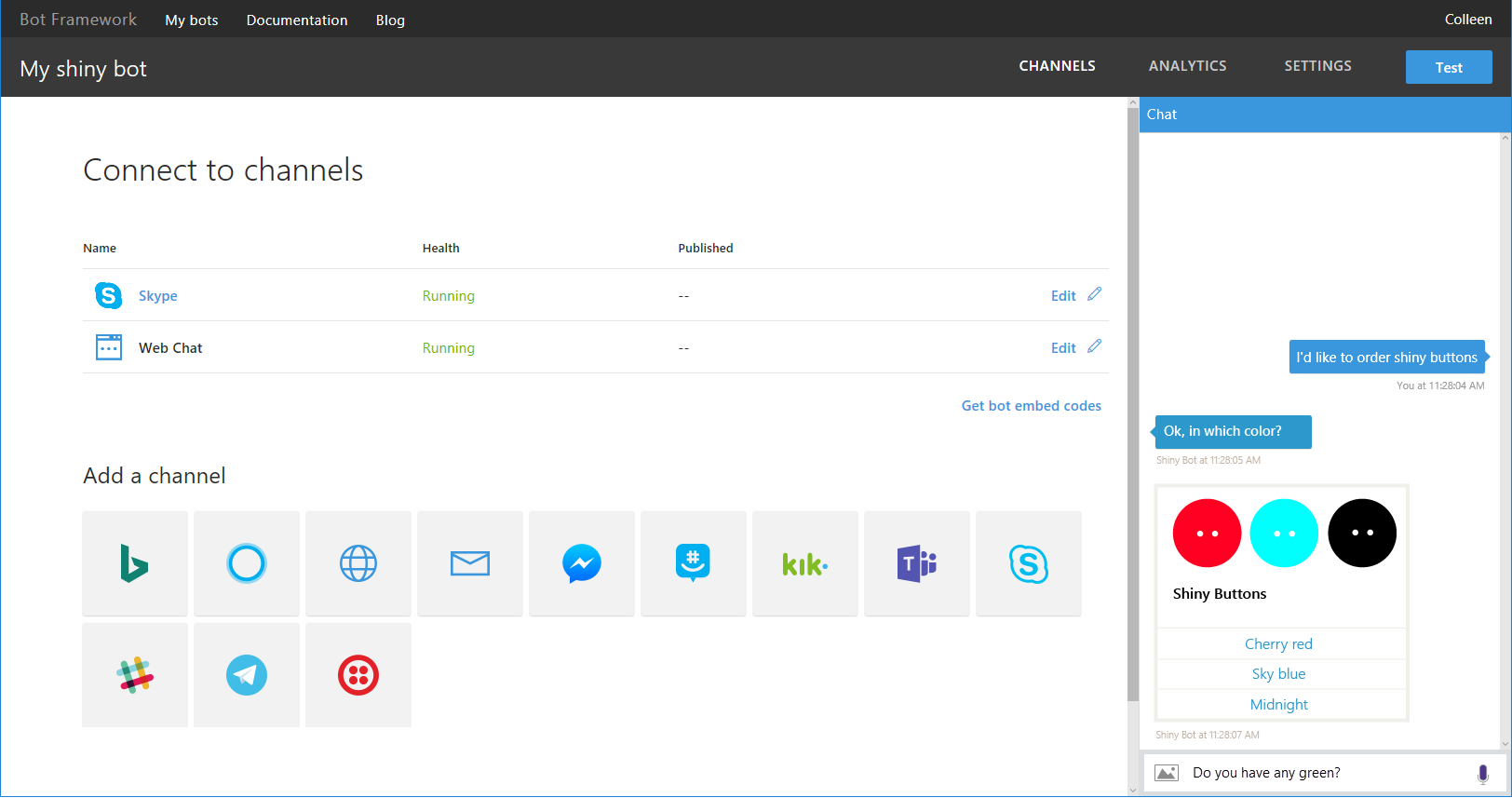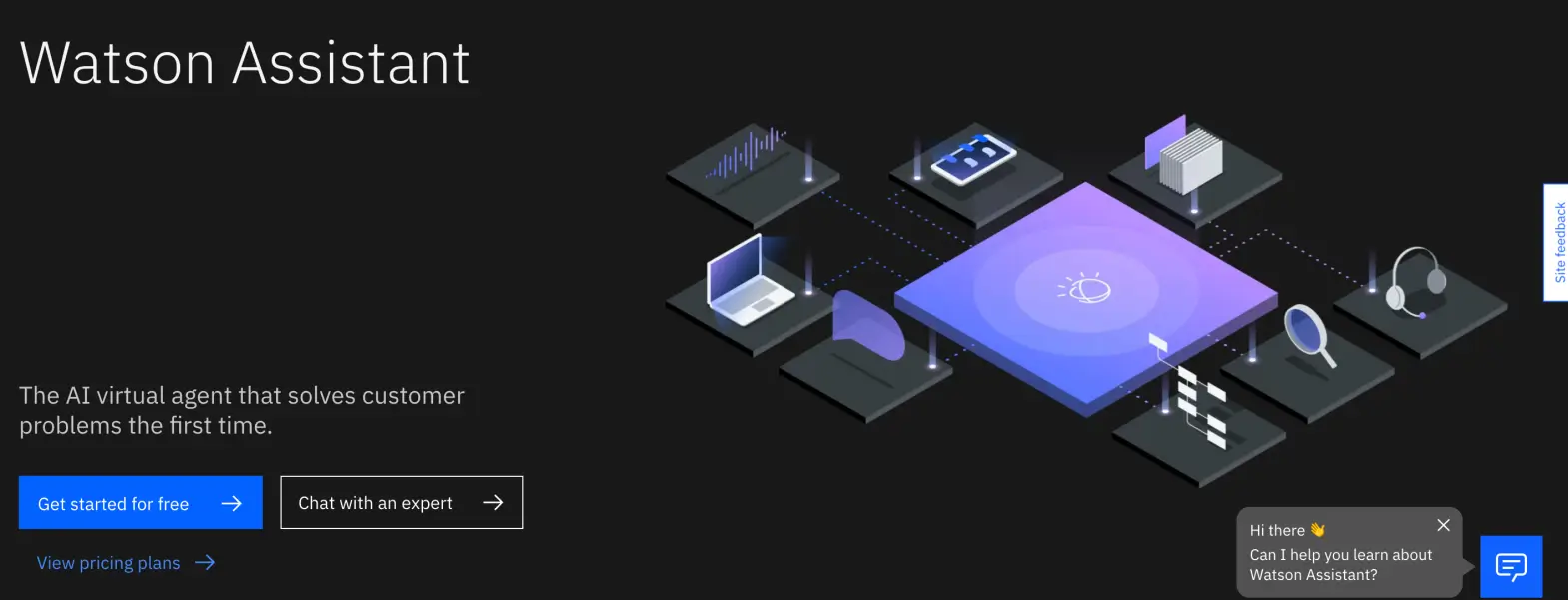Conversational AI has revolutionized and bridged the gap between humans and technology. It enables computers to engage in natural, contextually aware conversations.
According to Business Wire, 73% of users prefer human-like interactions when engaging with AI-driven platforms. However, conversing with a customer service bot is like talking to a digital parrot who can't understand your requests.
Undoubtedly, there is a need to revolutionize Conversational AI. Enter Rasa technology, a groundbreaking platform that fundamentally reshapes human interactions with machines.
Rasa is the leading open generative conversational AI chatbot platform, with over 50 million downloads. A recent study by Forrester Consulting found that Rasa can deliver an 181% ROI within 12 months of implementation.
Rasa enables developers to create sophisticated and context-aware chatbots and virtual assistants. As Rasa continues to evolve, its advancements are poised to revolutionize the future of Conversational AI.
Continue reading to learn more about how Rasa technology revolutionizes conversational AI.
What is Rasa Technology?
Rasa Technology is a software company that develops conversational AI tools to build chatbots. Their flagship product is Rasa Open Source, a framework for building and deploying large language models for conversational AI.
Businesses and organizations of all sizes use Rasa Open Source to build chatbots, virtual assistants, and other conversational AI applications.
Rasa technology provides tools and libraries for creating natural language understanding (NLU) and dialogue management components. It allows for more sophisticated and context-aware conversations.
Rasa has gained popularity due to its open-source nature, flexibility, and focus on customizability. It allows developers to build conversational agents integrated into various platforms and applications, such as websites, messaging apps, and more.

Key Components of Rasa
The Rasa platform consists of two main components:
- Rasa NLU
Rasa NLU component is responsible for understanding user input. It uses machine learning techniques to extract intents (the user's intention) and entities (relevant information) from the text. It helps the chatbot understand what the user wants and what information they provide.
- Rasa Core
Rasa Core component handles the dialogue management of the conversation. It allows developers to create conversational flows. It does this by defining actions the bot can take and rules for how the conversation should proceed based on the user's input and the current context.
Why Choose Rasa for Conversational AI?
Rasa stands out as a powerful choice for Conversational AI due to its:
- Open Source Nature: Rasa offers complete control and customization, fostering innovation and avoiding vendor lock-in.
- Flexibility: Its modular design accommodates components like NLU, dialogue management, and integration. It allows for more tailored solutions.
- Custom NLU Models: Rasa NLU lets you create domain-specific language understanding models for accurate intent recognition.
- Rich Context Handling: Rasa's dialogue management considers context, leading to more natural and meaningful conversations.
- Scalability: It suits projects of any scale, from small prototypes to large-scale production systems.
- Community & Ecosystem: A vibrant community, tutorials, and extensions bolster development and troubleshooting.
- Integration Capabilities: Rasa integrates seamlessly with platforms like Slack, Facebook Messenger, and custom channels.
- Machine Learning: Rasa employs ML algorithms to improve interactions over time, enhancing user experiences.
- Cost-Effective: By leveraging open-source tools, Rasa can lead to cost savings compared to proprietary alternatives. For more features, you can try their subscription plans.
- Privacy and Data Control: Rasa offers on-premises deployment, which is crucial for businesses with data privacy concerns.
How Does Rasa Revolutionize Conversational AI?
Rasa revolutionizes Conversational AI through its innovative approach and comprehensive features:
Open Source
Rasa offers open-source (and paid) tools that empower developers to create sophisticated AI chatbots and assistants without vendor lock-in. To access their more advanced features, you can give a try to their premium plans.
Two Parts, One Platform
Rasa consists of Rasa Open Source and Rasa X, providing a complete development and deployment pipeline for chatbots.
Contextual Understanding
It excels in context handling, understanding user intents, and maintaining conversational flow over multiple turns.
Customization
Rasa allows fine-tuning of machine learning models to align with specific business needs. It results in more accurate responses.
NLU & Core
The Natural Language Understanding (NLU) module enables intent and entity recognition, while the Core module manages dialogue and responses.
Active Learning
It supports iterative learning by suggesting data samples to annotate, improving the bot's performance over time.
Multilingual and Multichannel Support
Rasa isn't just fluent in one language; it's a polyglot that speaks multiple languages. And when it comes to platforms, Rasa is omnipresent. It fits right in on different messaging platforms – Facebook Messenger, WhatsApp, Telegram – you name it!
Top 5 Rasa Chatbot Alternatives
In this section, you will find the top 5 alternatives to Rasa Chatbot.
1. BotPenguin

BotPenguin is a chatbot platform that is a good alternative to Rasa. It offers features similar to Rasa, including natural language understanding, machine learning, and integration with other services.
However, BotPenguin also has several unique features, such as:
- A drag-and-drop chatbot builder: This makes it easy to create chatbots without any coding experience.
- A built-in knowledge base: This allows chatbots to access information from a central repository, which can help them provide more accurate and helpful answers to customer queries.
- Various pre-trained models: These can quickly create chatbots for multiple purposes, such as customer service, sales, and marketing.
BotPenguin is a good choice for businesses looking for an easy-to-use, powerful, and scalable chatbot platform. It is also a good choice for businesses that need to create chatbots for various purposes and various platforms:
- WhatsApp Chatbot
- Facebook Chatbot
- WordPress Chatbot
- Telegram Chatbot
- Website Chatbot
- Squarespace Chatbot
2. Dialogflow

Developed by Google, Dialogflow offers a user-friendly platform for building conversational agents. It provides natural language understanding (NLU) capabilities and easy integration with various messaging platforms.
Dialogflow also supports both text and voice interactions.
3. Microsoft Bot Framework

Microsoft Bot Framework platform from Microsoft enables developers to build, deploy, and manage chatbots across multiple channels. It supports integration with Microsoft's Azure services and offers solid enterprise-level capabilities.
Suggested Reading: How to Choose the Right Rasa Deployment Solution?
4. IBM Watson Assistant

IBM's offering provides a platform to build AI-powered chatbots and virtual assistants. It supports various channels and offers a range of tools for creating complex conversational flows.
5. Amazon Lex

Developed by Amazon,Lex provides the technology behind Amazon Alexa. It also enables developers to build conversational application interfaces using voice and text.
Future Trends and Innovations of Rasa
Now that we've peeked into the present let's gaze into the future trends of Rasa. Here are some potential future trends and innovations for Rasa:
Advanced NLU Models
Rasa might continue incorporating more advanced natural language understanding (NLU) models. It could leverage transformer-based architectures like BERT and GPT. By doing this, it can enhance Rasa's intent and entity recognition capabilities.
Multimodal Support
Conversations are becoming more multimodal, involving text, images, voice, etc. Rasa might work on incorporating better support for processing and generating different media types within conversations.
Personalization and Contextualization
Rasa could focus on improving the system's ability to remember and use contextual information from ongoing conversations. It leads to more personalized and coherent interactions.
Low-Resource and Multilingual Support
There might be efforts to enhance Rasa's capabilities in low-resource settings and to support more languages effectively. It makes conversational AI accessible to a broader range of users.
Enhanced Dialogue Management
Rasa might develop more sophisticated dialogue management techniques, including reinforcement learning-based approaches. It will aid in creating more engaging and contextually appropriate conversations.
Conclusion
In conclusion, the emergence of Rasa technology marks a pivotal moment in the evolution of Conversational AI. It brings forth a revolutionary approach that transforms how we interact with machines.
Rasa's emphasis on open-source, customizable, and context-aware solutions has redefined the capabilities of chatbots and virtual assistants. It propels them beyond scripted responses into dynamic, natural conversations.
A study by Forrester Consulting found that Rasa can reduce costs by up to 30% and improve customer satisfaction by up to 20%. By implementing Rasa, businesses can drive their success to a new height.
Frequently Asked Questions (FAQs)
What is Rasa Technology, and how does it relate to Conversational AI?
Rasa Technology is an open-source framework that empowers developers to build sophisticated, dynamic chatbots and virtual assistants. It can enhance Conversational AI by providing advanced natural language understanding (NLU) and dialogue management capabilities.
How does Rasa differ from traditional rule-based chatbots?
Unlike traditional rule-based chatbots, Rasa uses machine learning to understand and respond to user inputs in a more contextually relevant manner. Rasa's NLU and dialogue management enable chatbots to hold meaningful and dynamic conversations, making interactions feel more human-like.
What are the critical components of Rasa Technology?
Rasa consists of two main components: Rasa NLU, responsible for understanding user intents and extracting entities, and Rasa Core, which manages the flow of conversations and decides the appropriate responses based on context.
How does Rasa ensure data privacy and security in Conversational AI?
Rasa stands out in terms of data privacy by enabling on-premises data handling. It means sensitive user data remains within the organization's environment, addressing potential privacy concerns associated with cloud-based solutions.
Can Rasa chatbots be customized for specific industries and use cases?
Absolutely! Rasa's open-source nature allows developers to tailor chatbots to specific industries and use cases. Whether it's healthcare, finance, e-commerce, or education, Rasa meets the unique needs of different sectors.
What is the significance of Rasa's advanced Natural Language Understanding (NLU)?
Rasa's NLU is a game-changer, as it empowers chatbots to comprehend user intentions, even when expressed in diverse language styles or domain-specific jargon. It enhances the accuracy and effectiveness of interactions.
How does Rasa's dynamic dialogue management work?
Rasa Core, the dialogue management component, enables chatbots to manage complex and dynamic conversations by learning from user interactions and adjusting responses accordingly. It ensures smoother and more engaging conversations.


